Overview:
The top updates in the ADA Type 2 Diabetes guidelines for 2024 emphasize personalized treatment, incorporating lifestyle modifications, enhanced pharmacological approaches, and the integration of technology into diabetes management. These updates are supported by data showing the importance of patient-centered care, the effectiveness of newer medications like SGLT2 inhibitors and GLP-1 receptor agonists in managing both glycemic control and cardiovascular risks, and the necessity of routine screenings and mental health evaluations to improve overall patient outcomes.
Introduction
The landscape of diabetes management is evolving rapidly, with the American Diabetes Association (ADA) implementing significant updates to its guidelines for type 2 diabetes care in 2024. These revisions underscore the importance of personalized treatment approaches that prioritize patient engagement and lifestyle modifications alongside pharmacological interventions.
As nearly three-quarters of U.S. adults with diabetes focus on weight management to reduce health risks, the emphasis on cardiovascular health and shared decision-making between patients and healthcare providers has never been more critical.
With advancements such as continuous glucose monitoring and the introduction of new medications like Teplizumab, the guidelines reflect a comprehensive strategy aimed at improving patient outcomes.
This article delves into the key updates and their implications for effective diabetes management, providing insights into how healthcare professionals can navigate this evolving framework to enhance care for their patients.
Key Updates in ADA Type 2 Diabetes Management Guidelines
The American Diabetes Association (ADA) has introduced vital updates to its ADA type 2 diabetes guidelines for 2024, emphasizing the necessity of personalized treatment. A notable aspect of these revisions is the enhanced focus on patient-centered approaches, which integrate lifestyle interventions with pharmacological treatments. This holistic strategy is particularly relevant considering that 73.1% of U.S. adults diagnosed with diabetes are actively managing or losing weight to reduce the risk of related diseases, showcasing a proactive approach towards health.
Moreover, the guidelines emphasize cardiovascular health care in individuals with diabetes, acknowledging the interrelation of these conditions. Regular monitoring of glycemic control remains essential, alongside the imperative for healthcare providers to engage in shared decision-making with individuals regarding their treatment options. As stated by the American Diabetes Association Professional Practice Committee in the 'Summary of revisions: Standards of Care in Diabetes–2024,' staying informed about the ADA type 2 diabetes guidelines is crucial for effective oversight and improving patient outcomes.
Additionally, the guidelines emphasize the continuation of personal continuous glucose monitoring (CGM) use in hospitalized individuals when clinically appropriate, reflecting a commitment to comprehensive care. The recent endorsement of Teplizumab also signifies notable progress, as it is now acknowledged for postponing the onset of stage 3 type 1 condition in individuals with stage 2, further illustrating the changing landscape of care for this illness. At T2 Solutions, we are committed to enhancing the control of blood sugar conditions through education, community support, and comprehensive resources for both Type 2 and Type 3 types.
We provide a range of resources, including educational materials, support groups, and personalized care plans, ensuring newly diagnosed individuals have access to the latest information and a supportive community as they navigate their health journey. For more information and to connect with our community, we invite you to subscribe to our updates and explore the resources available at T2D Solutions.
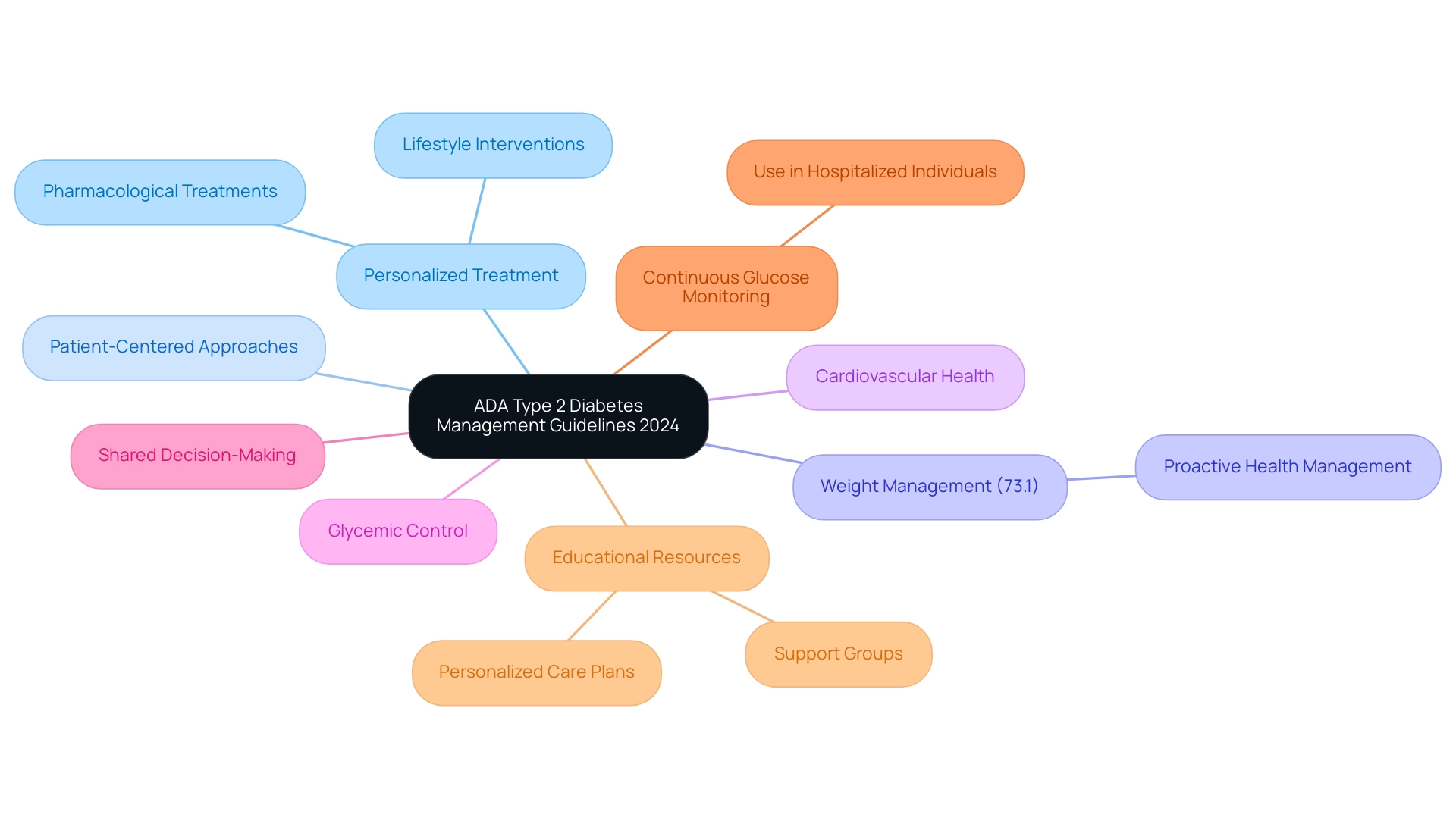
Revised Pharmacologic Approaches for Type 2 Diabetes Treatment
As T2DSolutions launches as a new resource hub for Type 2 and Type 3 diabetes education and community support, it is important to highlight recent updates in the pharmacologic management of type 2 diabetes. These updates reflect a significant shift towards incorporating newer medication classes, specifically SGLT2 inhibitors and GLP-1 receptor agonists. These agents have shown efficacy not only in improving glycemic control but also in mitigating cardiovascular risks.
Current guidelines, specifically ADA Type 2 diabetes guidelines, advocate for the consideration of these medications as first-line therapies for individuals, particularly those at heightened risk for cardiovascular disease. Notably, recent data reveal that across 18 VISNs, the median utilization rates for SGLT2 inhibitors and GLP-1 receptor agonists were 11.3% and 8.2%, respectively, highlighting a variance in adoption that T2DSolutions aims to address through education and community support. Furthermore, a personalized approach to medication regimens is increasingly emphasized, taking into account individual circumstances such as comorbidities, preferences, and specific treatment objectives.
Such tailored strategies are crucial for enhancing the effectiveness of diabetes management and optimizing outcomes for individuals. HX and TL declare no competing interests, adding credibility to the discussion. Additionally, a case study titled 'Demographics and Characteristics of Patients Receiving SGLT2i and GLP-1 RA' reveals that younger patients with ASCVD and T2DM are more likely to receive these cardioprotective agents, emphasizing the need for targeted interventions to improve utilization among older and diverse populations.
T2DSolutions will provide resources and support to help bridge these gaps in care.
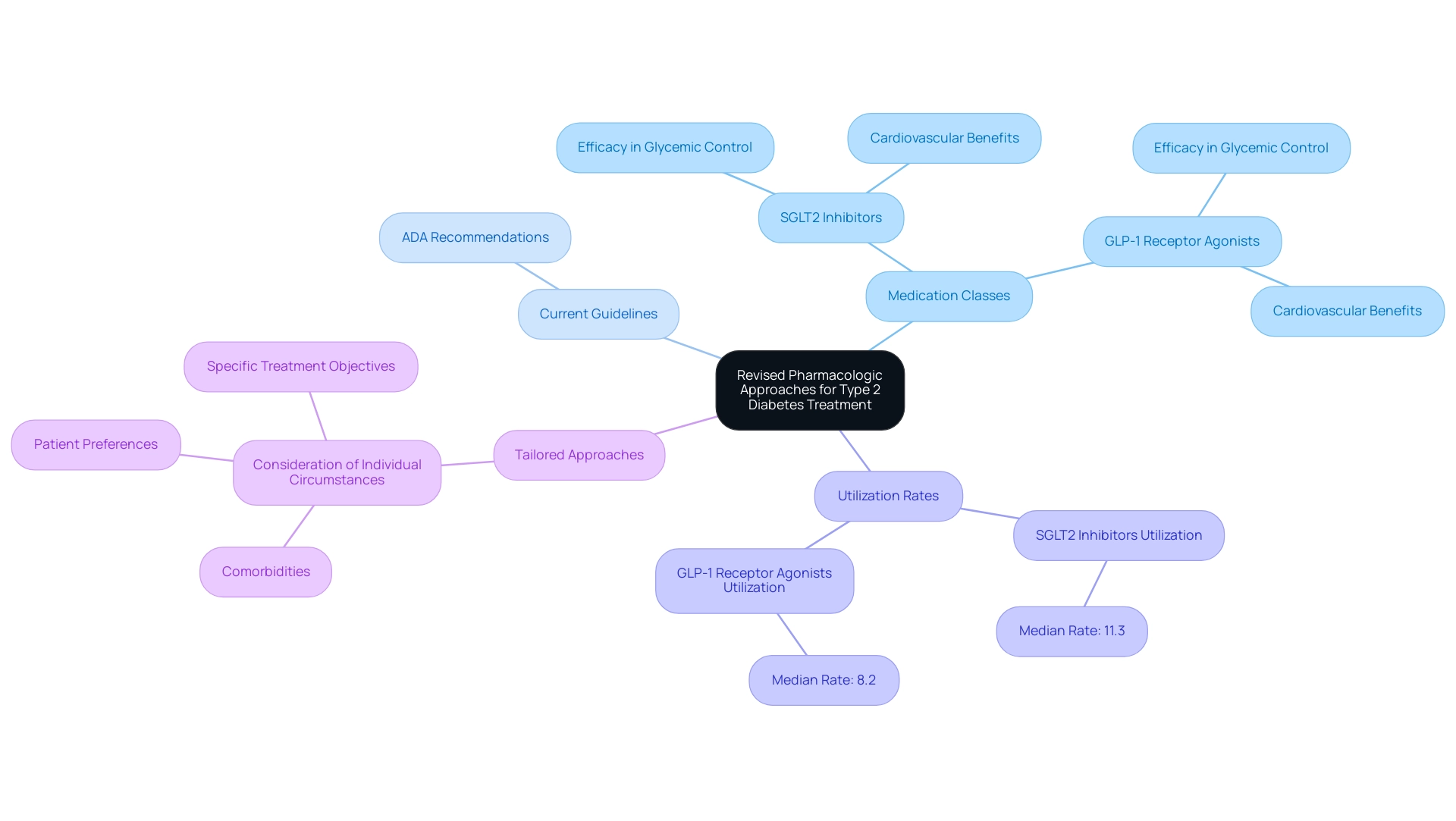
Emphasis on Lifestyle Modifications
The ADA type 2 diabetes guidelines emphasize the importance of lifestyle changes as essential to effective control of the condition. With the launch of T2DSolutions, a brand new resource hub dedicated to Type 2 and Type 3 blood sugar education and community support, we emphasize these recommendations by promoting the adoption of a balanced diet, primarily consisting of whole foods, regular physical activity, and effective weight control strategies. Notably, 84% of the studies supporting the ADA type 2 diabetes guidelines were conducted in Asia, underscoring the global relevance of these findings.
T2DSolutions aims to provide personalized nutrition plans tailored to individual health goals and cultural preferences, enhancing both adherence and success in managing diabetes-related health. Additionally, we will offer educational resources and behavioral strategies, such as goal setting and self-monitoring, which are critical in supporting sustainable lifestyle changes. Recent studies have shown that such modifications not only improve glycemic control but also significantly reduce the risk of diabetes-related complications.
For example, the PREDIMED study's post-hoc reports revealed that individuals following a Mediterranean diet experienced a 30% to 50% risk reduction in developing type 2 conditions, irrespective of significant weight loss. T2DSolutions is dedicated to incorporating these lifestyle interventions into care for individuals with metabolic conditions, enabling them to attain better health results. As always, we uphold the principles of open access, as noted by Anne Helen Hansen, ensuring that knowledge is shared and utilized for the benefit of all individuals.
Furthermore, it's vital to recognize that statistical heterogeneity was not viewed as a limitation in these studies, thanks to their large sample sizes and narrow confidence intervals, which adds robustness to the research findings.
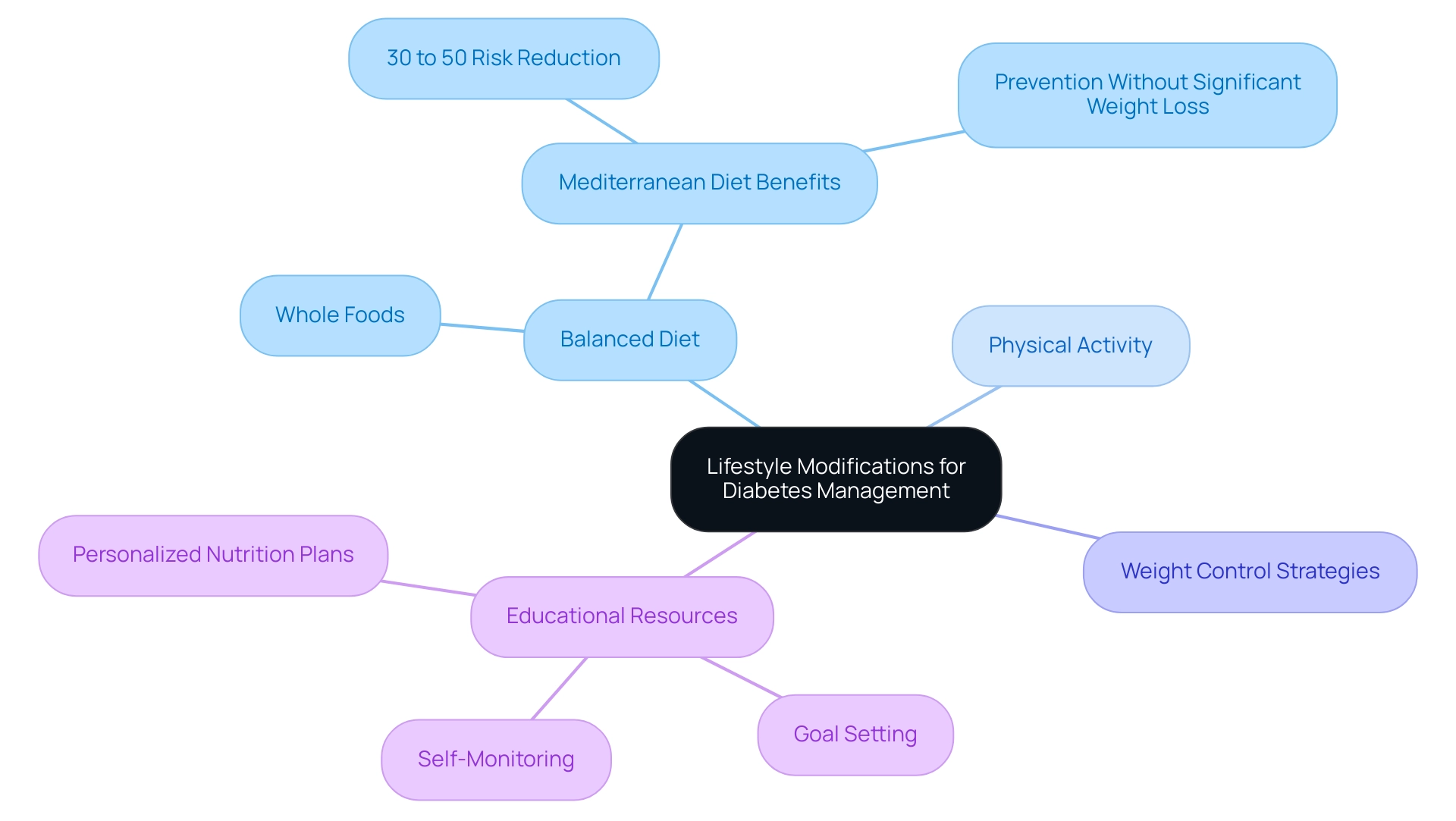
Integration of Technology in Diabetes Management
The ADA type 2 diabetes guidelines strongly promote the incorporation of technology into blood sugar control, acknowledging its transformative potential for enhancing individual results. As we launch T2DSolutions, a comprehensive resource hub for Type 2 and Type 3 health education and community support, we aim to empower newly diagnosed patients with the knowledge and tools necessary for effective self-management. T2DSolutions will offer a range of resources, including:
- Educational materials on blood sugar control
- Access to community support groups
- Tools for monitoring health metrics
Continuous glucose monitoring (CGM) systems, insulin delivery devices, and applications for managing blood sugar are pivotal components of this approach, enabling real-time data tracking and personalized feedback. For instance, in the AiDAPT trial, the AID group achieved a time in range percentage (Tip) of 68.2 ± 10.5%, significantly higher than the control group's 55.6 ± 12.5%, underscoring the effectiveness of these technologies with an adjusted difference of 10.5%. Healthcare providers are urged to encourage patients to leverage these advancements to enhance self-management skills, optimize glycemic control, and foster greater involvement in their health management.
As technology continues to progress, its role in managing diabetes-related conditions will increasingly become essential. An author aptly noted, 'The time is ripe for implementing thoughtfully designed digital health tools that strengthen the connection between the individual and their support team and enable continuous, data-informed, on-demand management and education.' This sentiment encapsulates the core of the continuous development in blood sugar control, where data-informed approaches are vital for enhancing decision-making and improving patient results.
Moreover, it is essential to recognize that revised postpartum protocols now necessitate preconception assessment for individuals with prediabetes or a background of gestational glucose intolerance. Additionally, the ADA type 2 diabetes guidelines now recommend increased frequency for depression screening and have introduced sleep-promoting routines to support overall health in managing blood sugar. The integration of these elements reflects a more comprehensive approach to individual wellbeing, emphasizing the significance of addressing both physical and mental health.
T2DSolutions is dedicated to delivering the most recent ADA type 2 diabetes guidelines and resources to assist individuals in managing their health journey, including a case study on a data-driven care model that emphasizes how integrating various health data sources into clinical workflows can enhance decision-making and improve outcomes through continuous feedback and adjustment of care plans.

Focus on Mental Health and Emotional Well-Being
As T2DSolutions prepares to launch as a comprehensive resource hub for Type 2 and Type 3 health education and community support, it is essential to highlight the revised ADA type 2 diabetes guidelines that emphasize the integration of mental health considerations into management. Recognizing the challenges faced by individuals managing their condition, the ADA type 2 diabetes guidelines recommend that healthcare providers routinely evaluate patients for signs of depression, anxiety, and distress related to their health. Recent data indicates a concerning upward trend in depression prevalence in populations like Kansas, with an annual percentage change (APC) of 3.5%, underscoring the urgency of addressing mental health issues.
Diabetes distress—characterized by feelings of stress, anxiety, and depression linked specifically to managing the condition—affects approximately 33% to 50% of individuals with the illness. Therefore, incorporating mental health support into care plans for individuals with this condition is vital for fostering resilience and enhancing adherence to treatment protocols. T2DSolutions will offer tailored interventions, including access to mental health resources and coping strategies designed to address these emotional factors.
As noted by Dr. Kyungdo Han, PhD, 'The mechanisms underlying the association of T2D incidence with psychiatric disorders are multifactorial,' emphasizing the need for a holistic approach. By providing patients with effective coping strategies and addressing emotional factors, T2D Solutions aims to enhance overall quality of life and management outcomes.
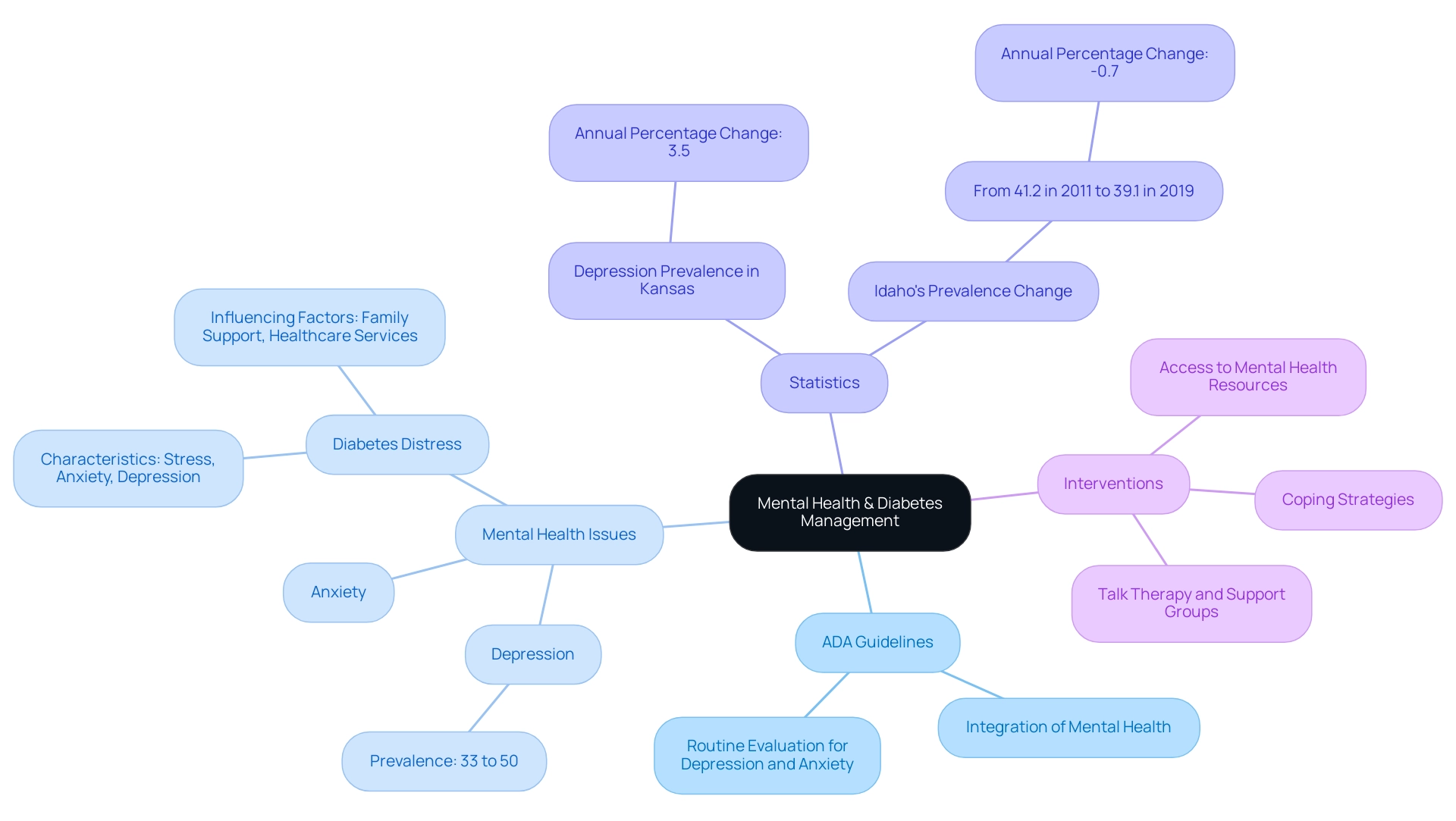
Updated Screening Recommendations
The latest ADA type 2 diabetes guidelines emphasize the critical importance of early detection of type 2 diabetes and its associated complications. Recent recommendations, aligned with ADA type 2 diabetes guidelines, indicate that adults aged 35 and older should undergo routine screening for blood sugar issues, extending this directive to individuals presenting risk factors such as obesity, hypertension, or a family history of such conditions. Furthermore, the ADA type 2 diabetes guidelines advocate for the regular monitoring of HbA1c levels, which is a key indicator for assessing long-term glycemic control and identifying potential complications early.
Following the ADA type 2 diabetes guidelines not only enables timely interventions but also greatly enhances outcomes for individuals. In this context, T2DSolutions acts as a comprehensive resource center designed to assist newly diagnosed individuals in comprehending and managing their condition effectively. Studies such as the Diabetes Prevention Program (DPP) underline the effectiveness of lifestyle interventions across various subgroups, demonstrating a significant impact after three years of follow-up.
As Dr. John B. Wong from Tufts University School of Medicine states, 'Early detection is crucial for enhancing the long-term health of individuals with diabetes-related conditions.' Furthermore, the introduction of immunotherapy, especially checkpoint inhibitors for cancer therapy, has resulted in instances of autoimmune conditions, emphasizing the necessity for healthcare professionals to supervise individuals closely and inform them about the risks linked to these treatments. For more information and resources related to blood sugar management, we encourage you to visit T2DSolutions.
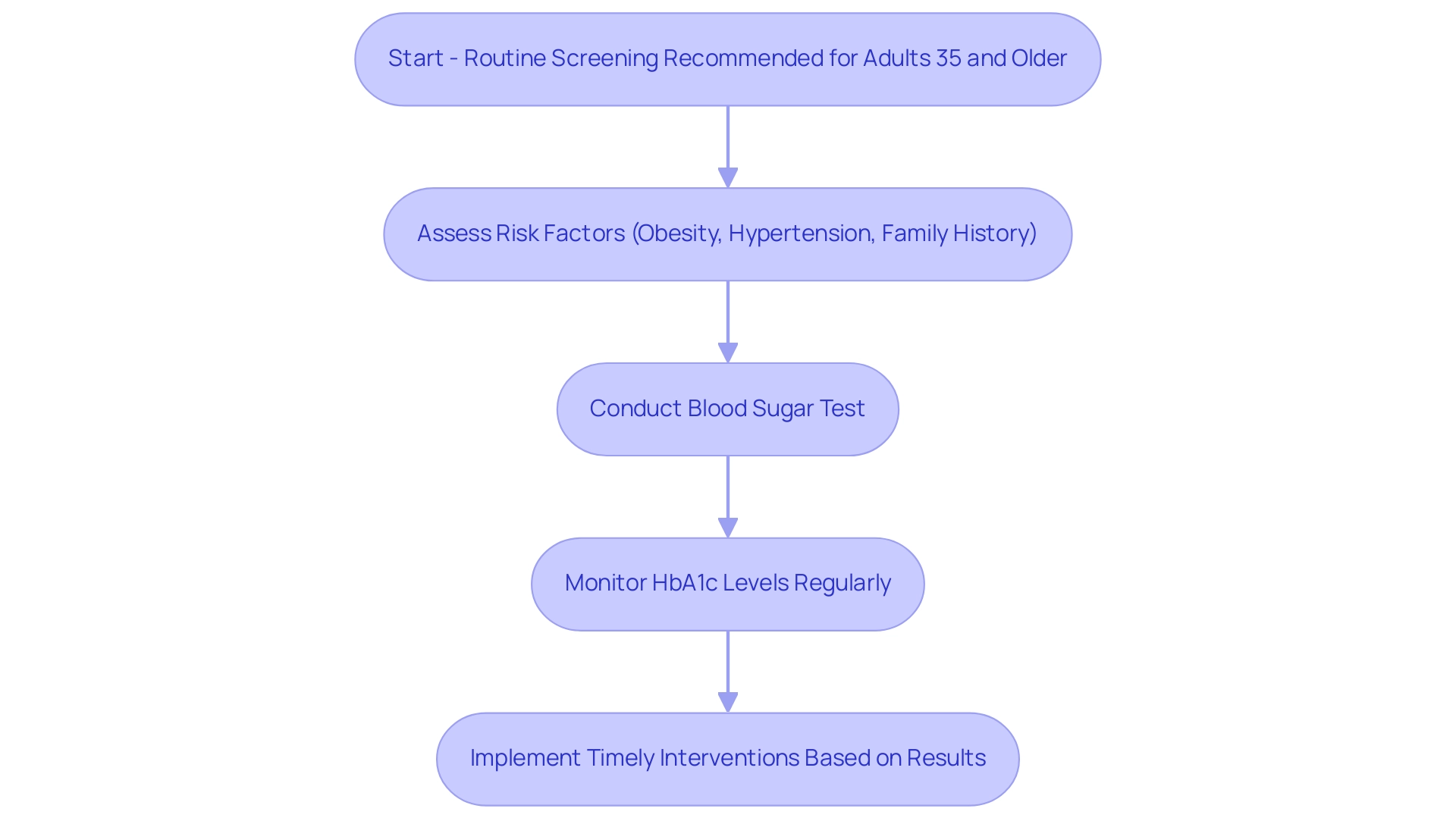
Collaboration and Communication in Diabetes Care
The ADA type 2 diabetes guidelines emphasize a cooperative method in managing blood sugar conditions, highlighting the crucial role of communication among healthcare providers, individuals, and caregivers. As T2DSolutions aims to become a comprehensive resource hub for Type 2 and Type 3 health education, integrating these guidelines is crucial. Forming a multidisciplinary support team that includes:
- Doctors
- Educators in managing blood sugar
- Nutritionists
- Mental health specialists
aligns with our mission to assist those recently diagnosed effectively.
Effective communication within this team ensures that all members are aligned in their goals and strategies, significantly enhancing the quality of patient service. For example, a systematic review by the Community Guide shows that team-based support enhanced blood pressure regulation, which is essential for overseeing blood sugar levels. Furthermore, the review shows a median increase of 16.7 percentage points in participants achieving LDL levels below 130 mg/dL, underscoring the positive outcomes associated with collaborative care models.
By fostering a collaborative environment, T2DSolutions can better support patients in achieving their diabetes management objectives aligned with ADA type 2 diabetes guidelines, demonstrating the profound impact that communication and teamwork have in this vital area of healthcare.
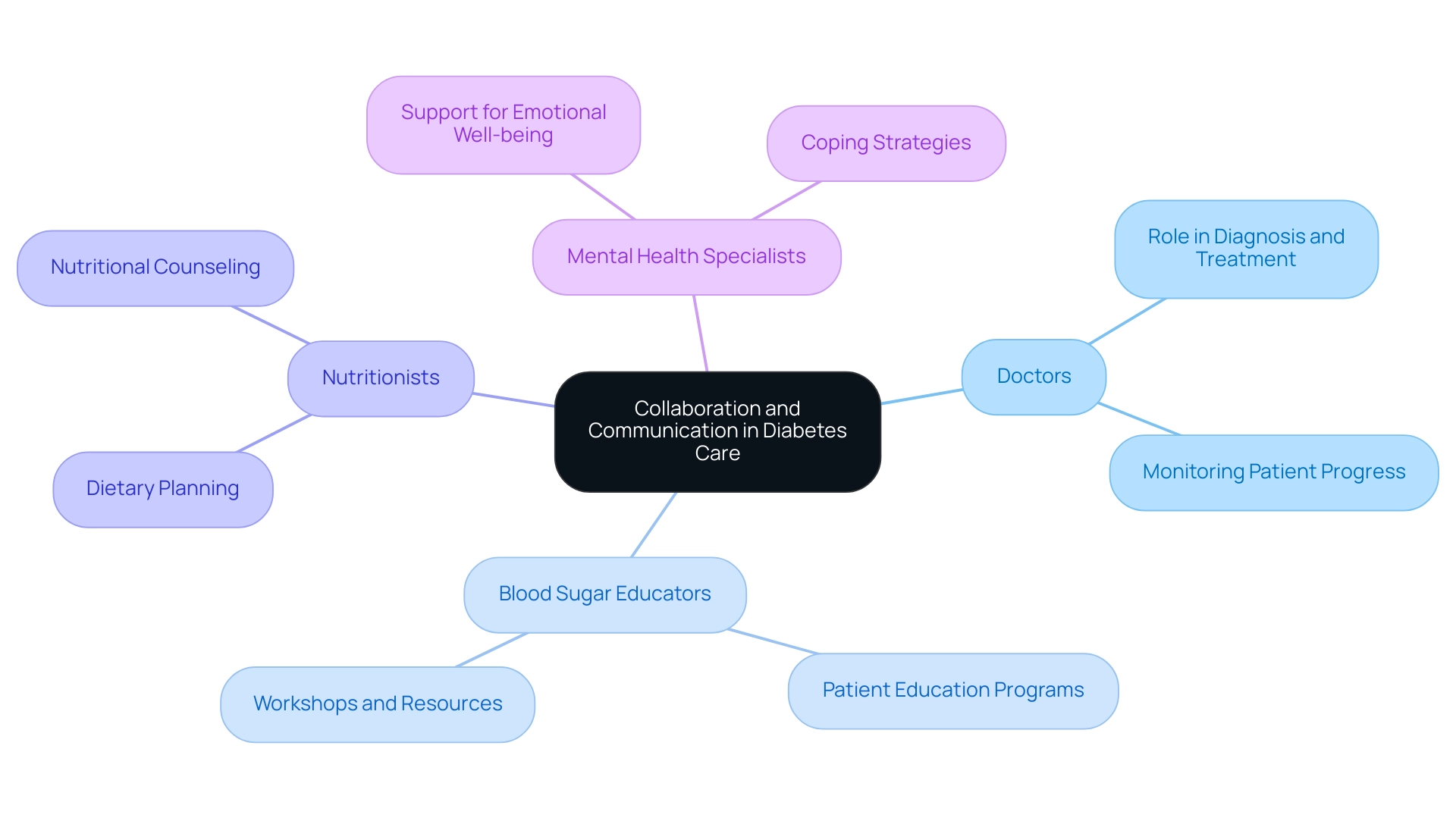
Conclusion
The updates to the American Diabetes Association (ADA) guidelines for 2024 represent a significant advancement in the management of type 2 diabetes, emphasizing the need for personalized, patient-centered care. With a focus on integrating lifestyle modifications, pharmacological treatments, and the use of technology, these guidelines aim to improve health outcomes for individuals living with diabetes. The emphasis on cardiovascular health and the importance of shared decision-making between healthcare providers and patients are critical components of this comprehensive approach.
Moreover, the incorporation of mental health considerations and updated screening recommendations highlights the holistic nature of diabetes management. By recognizing the interconnectedness of physical and emotional well-being, healthcare providers can better support patients in navigating their diabetes journey. The guidelines also call for enhanced collaboration among care teams, ensuring that communication remains a cornerstone of effective diabetes management.
As the landscape of diabetes care continues to evolve, the commitment to utilizing innovative tools and resources, such as continuous glucose monitoring and new medication options, will be vital. Organizations like T2DSolutions are poised to play a crucial role in empowering patients through education and community support, fostering an environment that encourages proactive health management. The future of diabetes care is bright, with a clear focus on improving patient outcomes through comprehensive, individualized strategies.



